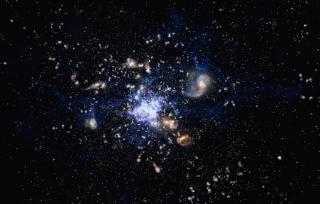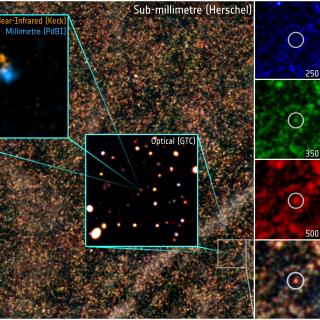Bibcode
Pierel, J. D. R.; Frye, B. L.; Pascale, M.; Caminha, G. B.; Chen, W.; Dhawan, S.; Gilman, D.; Grayling, M.; Huber, S.; Kelly, P.; Thorp, S.; Arendse, N.; Birrer, S.; Bronikowski, M.; Cañameras, R.; Coe, D.; Cohen, S. H.; Conselice, C. J.; Driver, S. P.; DŚilva, J. C. J.; Engesser, M.; Foo, N.; Gall, C.; Garuda, N.; Grillo, C.; Grogin, N. A.; Henderson, J.; Hjorth, J.; Jansen, R. A.; Johansson, J.; Kamieneski, P. S.; Koekemoer, A. M.; Larison, C.; Marshall, M. A.; Moustakas, L. A.; Nonino, M.; Ortiz, R.; Petrushevska, T.; Pirzkal, N.; Robotham, A.; Ryan, R. E.; Schuldt, S.; Strolger, L. G.; Summers, J.; Suyu, S. H.; Treu, T.; Willmer, C. N. A.; Windhorst, R. A.; Yan, H.; Zitrin, A.; Acebron, A.; Chakrabarti, S.; Coulter, D. A.; Fox, O. D.; Huang, X.; Jha, S. W.; Li, G.; Mazzali, P. A.; Meena, A. K.; Pérez-Fournon, I.; Poidevin, F.; Rest, A.; Riess, A. G.
Bibliographical reference
The Astrophysical Journal
Advertised on:
5
2024
Journal
Citations
39
Refereed citations
30
Description
Supernova (SN) SN H0pe is a gravitationally lensed, triply imaged, Type Ia SN (SN Ia) discovered in James Webb Space Telescope imaging of the PLCK G165.7+67.0 cluster of galaxies. Well-observed multiply imaged SNe provide a rare opportunity to constrain the Hubble constant (H 0), by measuring the relative time delay between the images and modeling the foreground mass distribution. SN H0pe is located at z = 1.783 and is the first SN Ia with sufficient light-curve sampling and long enough time delays for an H 0 inference. Here we present photometric time-delay measurements and SN properties of SN H0pe. Using JWST/NIRCam photometry, we measure time delays of Δt ab = $-{116.6}_{-9.3}^{+10.8}$ observer-frame days and Δt cb = $-{48.6}_{-4.0}^{+3.6}$ observer-frame days relative to the last image to arrive (image 2b; all uncertainties are 1σ), which corresponds to a ∼5.6% uncertainty contribution for H 0 assuming 70 km s‑1 Mpc‑1. We also constrain the absolute magnification of each image to μ a = ${4.3}_{-1.8}^{+1.6}$ , μ b = ${7.6}_{-2.6}^{+3.6}$ , μ c = ${6.4}_{-1.5}^{+1.6}$ by comparing the observed peak near-IR magnitude of SN H0pe to the nonlensed population of SNe Ia.
Related projects

Molecular Gas and Dust in Galaxies Across Cosmic Time
Two of the most fundamental questions in astrophysics are the conversion of molecular gas into stars and how this physical process is a function of environments on all scales, ranging from planetary systems, stellar clusters, galaxies to galaxy clusters. The main goal of this internal project is to get insight into the formation and evolution of
Helmut
Dannerbauer

Formation and Evolution of Galaxies: Observations in Infrared and other Wavelengths
This IAC research group carries out several extragalactic projects in different spectral ranges, using space as well as ground-based telescopes, to study the cosmological evolution of galaxies and the origin of nuclear activity in active galaxies. The group is a member of the international consortium which built the SPIRE instrument for the
Ismael
Pérez Fournon